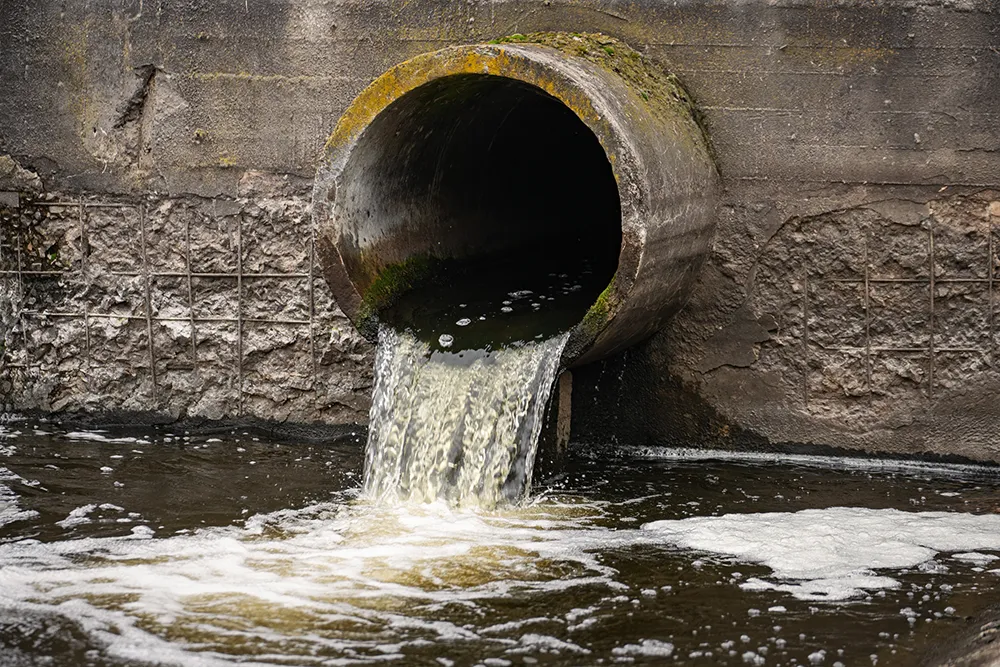What is Barium?
Barium is a silvery-white alkaline earth metal. Since it is very reactive, it is found in nature only in bound form. In its chemical properties, it is similar to calcium. Barium can self-ignite in moist air. It mainly occurs in the minerals barite and witherite (barium carbonate). Barium is mined worldwide. The largest known deposits of barite in the UK are in the mining regions of northern England and Scotland, particularly in the areas around the towns of Durham, Cumbria and Aberfeldy. The metal is poorly soluble in water. Its water-soluble and acid-soluble compounds are toxic. Barium and its radioactive isotopes play a role in nuclear fission. Barium compounds develop a characteristic green flame color. Together with strontium and copper salts, they make every firework shine in impressive colors.
How does Barium get into Drinking Water?
Since barium is hardly soluble, there is hardly any leaching of barium-containing rocks in the earth’s interior. The quantities dissolved in groundwater are therefore very small. A possible entry can occur via improperly disposed industrial wastewater.
How does Barium Affect the Human Body?
Barium is essential for plants, which absorb it from the soil and store it. Consequently, barium is also found in the human body. About one milligram is absorbed daily with food. The proportion of the element in the organism is 70-100 ppb (parts per billion) in the billionth range.
In medicine, water-insoluble, harmless barium sulphate is used. It is used as a contrast agent in X-rays and computer tomography to mark the digestive tract.
High precautions are required for workers in industry. The glass industry, for example, processes highly toxic barium carbonate. The classification attests this chemical acute toxicity by inhalation. The same applies to barium chloride. The Workplace Exposure Limits (WEL) in the UK are 0.5 milligrams of barium oxide (BaO) per cubic metre of air (mg/m³) as an 8-hour time-weighted average and 1.5 mg/m³ as the maximum permissible concentration for 15 minutes. The lethal dose for an adult is between 1g and 15g and depends on the solubility of the respective barium salts. Depending on the dosage, barium can lead to symptoms of varying severity such as: Blood pressure increase, muscle cramps, muscle paralysis, heart rhythm and circulation disorders or tremor (involuntary muscle contraction). After oral barium intake through food, drinking water and mineral water, no health problems have been observed so far.
Drinking Water Contaminated with Barium: What to Do?
The UK Health and Safety Executive (HSE) has classified barium oxide as a category 2 substance (carcinogenic in animals) and a category 3 substance (insufficient evidence of a carcinogenic effect in humans). In addition, barium has also been classified as toxic, meaning that it can be harmful to health in high doses. There is no specific regulation or limit value for barium in the Drinking Water Ordinance. Although there is no specific limit value for barium in the Drinking Water Ordinance, there is a general quality standard for the chemical composition of drinking water that ensures that all substances contained in the water, including barium, are present in safety-relevant quantities. The following processes are used to remove barium from the water: flocculation, ion exchange, reverse osmosis and activated carbon filtration.
Have your Drinking Water Tested for Barium
Although barium is present in drinking water only in very small amounts, only a water test can ultimately provide information about the exact quality of your own drinking water. For well operators and homeowners, it is particularly important to test the water regularly for heavy metals (e.g. iron, manganese, lead) and microorganisms (e.g. legionella) in order to be able to react effectively to any excesses. A laboratory water test kit will tell you exactly what is flowing out of your tap.


